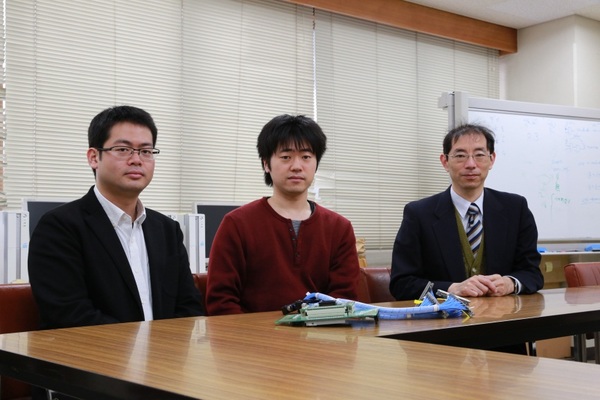BIST research with CloudTesting™ Service
Professor Seiji Kajihara, of the Kyushu Institute of Technology, has a proven track record of conducting successful semiconductor test techniques while using CloudTesting™ Service. His paper on this topic, “Capture Power Evaluation for a Low Power BIST Method Using a TEG Chip” was published in 2014.
Professor Kajihara discussed with us the details of this paper and the effective utilization of CloudTesting™ Service.
Outline of a research
Cloud Testing Service (CTS): Firstly, could you please tell us the outline of your research?
Professor Kajihara: Scan-based BIST has become common in recent years for Logic LSI Test. Scan-based BIST has advantages such as fault coverage improvement and diagnostic maintainability. While at the same time, it has a problem that power consumption is increased when LSI is tested. This increase results in LSI heat generation as well as voltage variation caused by current increment. Consequently, this may increase delays, possibly resulting in mis-tests.
Therefore, various initiatives have been proposed to reduce power consumption at scan test. For example, there is a method involving Pseudo Low-Pass Filter (PLPF) that cuts down scan-in power while reducing power consumption at scan-out by rewriting the value part of FF at scan-out (a multi cycle test method that can reduce capture power, etc.).
However, there is some research with Low Power BIST simulation, but few with experimental results regarding voltage and delay variation. Therefore, in this experiment we evaluated a low power BIST method by using CTS’ CX1000D with an oscilloscope. We prepared the TEG chip by working with VDEC (VLSI Design and Education Center) and measured the TEG chip.
Role of CloudTesting™ Service
CTS: Which CloudTesting™ Service was carried out for this research?
Professor Kajihara: We used the CTS CX1000D system to operate the TEG chip. The operational test pattern for the TEG chip was created on a PC and was run from the CX1000D to the TEG chip by using CTS’ FunctionalMeasure_IP.
CTS test patterns allow for easy looping which provides flexibility and compatibility to other test programs. Graduate students in my laboratory made the test pattern and set CTS up by simply referring to the CX1000 user’s manual and CX1000 pattern programming manual.
Achievement of research
CTS: What kind of results could you get from your experiments?
Professor Kajihara: With real experimental results, we could verify the effect of voltage drop reduction at scan test and the depression effects on delay increases. Moreover, we could confirm the correlation between capture toggle ratio and delay increases by comparing both experimental and simulated results.
Impression of CloudTesting™ Service
CTS: What kind of impression do you have after using CloudTesting™ Service?
Professor Kajihara: Firstly, easy pattern generation enabled the configuration of a loop in one pattern file.
Making a test program was also quite easy. At first, it took a little bit of time because of incorrect pin definition. After making some changes we were immediately able to make measurements.
What would you have used if you didn’t have CloudTesting™ Service?
CTS: If it were not for CTS, how would the experiment have been performed?
Professor Kajihara: For this paper, we evaluated the effect of a low power BIST method for measuring a TEG chip. If we didn’t use CTS, we could not have measured a real circuit and would have only finished with simulated results.
Future development
CTS: How will you proceed with your research?
Professor Kajihara: A newly designed chip will be ready in a few months. As soon as we receive it, we will start with new experiments using CTS.
Furthermore, we are planning to measure one target chip in a thermostatic chamber. We believe operating this chip in the chamber and evaluating it will be a very interesting experiment.
Professor Kajihara runs unprecedented experiments. The idea of letting CTS operate the TEG chip made this specific experiment a success.
CloudTesting™ Service can be set up with only the functionality you want to use. Various measurement algorithms and analysis tools are provided. It is also available for operating devices. Combining it with an Electron Beam Tester and an Emission Microscopy is also available. These enable more advanced measurements and validation.
Keep a look out for new test method research by Professor Kajihara.
